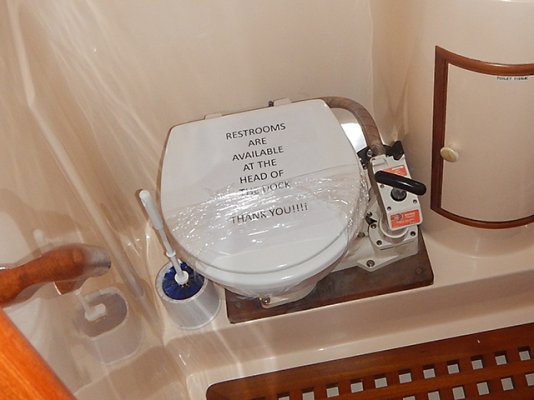BTW, get a mask when you do this particular job.
And get lots of rags to place under the toilet when you undo it. Have a trash bag with ties at the ready as well.
Oh nonsense! Rebuilding toilet does NOT have to be a smelly job, or even a messy one...nor are rags a good choice to catch any spills.
There are TWO rebuild kits for the PHII--PHIIRK for the version built before 06/92 and a PHIIRKC for the version built after 6/92, and not all the parts in 'em are interchangeable. So rebuilding a PHII starts with making sure you have the right kit for YOUR toilet.
Rebuilding any toilet is only a nasty job if:
a) You don't do it as scheduled preventive maintenance--which you get to do on
your terms at
your convenience--resulting in the need for a repair, which you
never get to do on your terms when it's convenient. It's called PREVENTIVE maintenance because it
prevents the need for 99% of repairs. A nasty smelly job is the price you pay for neglecting it. If kept well lubricated and rebuilt every 5-6 years as PREVENTIVE maintenance, a PHII can provide at least 20 years of reliable service.
b) Even if you do decide to rebuild before neglect leads to catastrophic failure, you don't take the time to prep for the job before taking anything apart. Preparation is 90% of the key to the success of
any job.
Prepping to rebuild a toilet starts with thoroughly rinsing out the pump and plumbing--the whole system--with plenty of clean water
before taking
anything apart.
Put plastic garbage bags or disposable aluminum pans under hose connections to catch any spills. (Warming hoses with a blow dryer makes them easier to remove and replace).
Have a couple of rolls of paper shop towels (super heavy duty paper towels, all I've ever seen are blue) handy...you'll need them.
Every rebuild or “service” kit includes a copy of the parts list with exploded drawing. If it’s missing, download and print one from the manufacturer’s website. That drawing is the only “instructions” you’ll get, so keep it close at hand and refer to it. Use the camera in your phone to take photos of the parts you're replacing while they’re still in place and compare them with the drawings to make sure you get the new part oriented correctly and/or installed in the right order if you had to remove more than one at a time..
Finally, put a healthy squirt of thick teflon or silicon grease (SuperLube, available from Ace Hardware is the best choice) into the pump to lube the toilet last thing before you put it back on the base
. Raritan includes a one-use tube of SuperLube in the kit. Full size tubes are available from Ace Hardware.
When putting the discharge fitting back on the pump after replacing the joker valve, be careful not to
over-tighten the bolts/screws. The flange on the joker valve (which, by the way, should align vertically) is the gasket that seals the fitting connection to the pump body. You want that connection to be leak proof, but over-tightening the screws/bolts will put puckers in the flange, actually
causing it to leak. So start by tightening all the screws just enough to barely achieve a snug connection, then only an additional quarter turn or even less of all the screws if necessary close off a leak.




